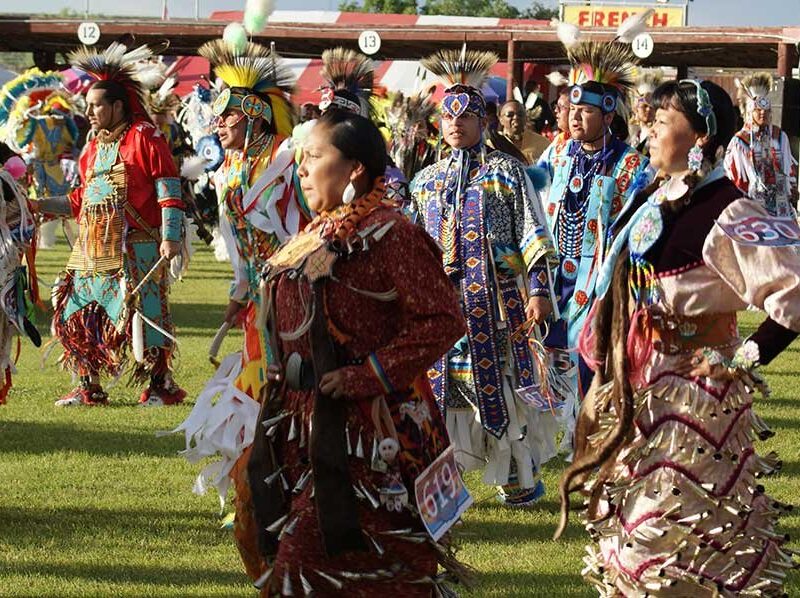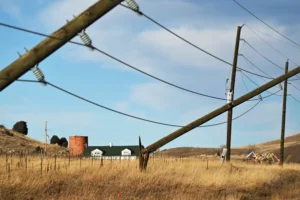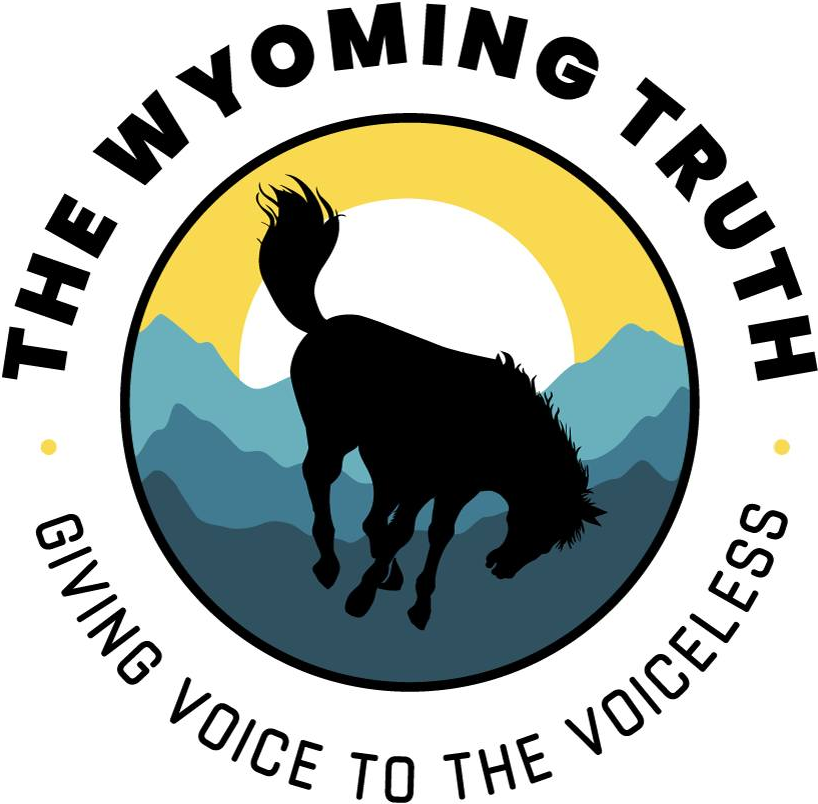A Maze of Injustice
Crimes against Native American Women Fall Through the Cracks
- Published In: Other News & Features
- Last Updated: Aug 19, 2021

The Eastern Shoshone tribe, which lives on the Wind River Reservation with the Northern Arapaho tribe, has many proud cultural traditions, but it also lives under the shadow of domestic violence against Native American women that is experienced at alarming rates across the United States. (Courtesy photo, Wind River Visitors Council)
By Lindsay Dreis
The Wyoming Truth
Native American women are ten times more likely to be murdered than non-Native American women, according to the U.S. Department of Justice.
They are also sexually assaulted at a rate four times the national average, yet the Department of Justice prosecutes just 33 percent of American Indian sexual assault cases.
In fact, of the 5,712 cases of missing or murdered American Indian women in 2016, the last year for which figures are available, just 116 of them were documented in a Justice Department database. Despite the astounding crime rate on many reservations, U.S. attorneys and the FBI continue to ignore these cases or fail to provide Natives with their reasoning, leading to longstanding distrust and hostility between American Indians and the justice system, according to Sarah Deer, a University of Kansas professor who is an expert on violence on reservations.

The reason Native American crimes are not pursued as vigorously as non-Native American crimes is complicated, Deer said. The Justice Department has cited a lack of admissible evidence, in addition to a dearth of federal resources and poor communication with tribal police. Typically, when a crime occurs, tribal police are the first responders and report the offense to state or federal authorities, who are not specifically trained on how to respond to issues on reservations, Deer said. As a result, many cases fall through the cracks, leading to what she calls a “maze of injustice.”
These systematic failures play out routinely in the west-central part of Wyoming on the Wind River Reservation, one of the most dangerous and notorious American Indian territories in the nation, with a crime rate five to seven times the national average.
Crime continues to rise, and tribal police are struggling to manage it, according to William Mathews, police chief of the federal Bureau of Indian Affairs. Mathews, who lives on Wind River, attributes the violence in part to the reservation’s inability to hire and retain officers.
Lynette St. Clair, an American Indian education coordinator who was born and raised on the reservation, recalled that there were just 20 police officers at any given time on the reservation throughout her childhood, which she cites as one of the largest contributing factors to the relentless crime the community faces.
Wind River experienced an influx of federal officers after The New York Times published an article in 2012 that highlighted the effects of crime on the lives of community members. While the reservation was in desperate need of additional law enforcement support, the officers who were stationed there did not have the proper training or cultural wherewithal to curb the crime rates or improve Natives’ quality of life, according to St. Clair. The community was “up in arms,” she said, and the officers only remained there for roughly a year after arriving.
The Wind River police agency employed 18 police officers and four civilian workers in 2019, according to the FBI’s 2019 Crime in the United States report. What they face is a daunting task, considering how Wind River is the fifth-largest reservation in the nation, covering more than 2.2 million miles across mountainous terrain that features 19 of Wyoming’s 20 highest peaks. The reservation, home to the Eastern Shoshone and Northern Arapaho tribes, is nearly twice the size of the state of Delaware.

Not only is there poor morale within the shrinking police force, but the officers there lack the proper authority to keep the community safe; tribal police report to the Bureau of Indian Affairs and are only able to arrest and charge reservation members, allowing many non-Natives to walk free after committing crimes on Native land.
Additionally, because the officers are federal employees, they are required to go through a background check, which Mathews said significantly prolongs the process. Then, once officers are hired, their role is limited to policing only Natives.

When a non-Native commits a crime on the Wind River Reservation, the tribal police call a state highway patrol agent or a Fremont County sheriff’s deputy to assist. Much of the time, these officers are miles away and do not want to pursue what they deem to be minor offenses, like reckless driving, according to Wyoming Highway Patrol Col. Kebin Haller. Non-Native offenders view this as an invitation to commit more crimes.
According to the Indian Law Resource Center in Helena, Montana, the Census Bureau reports that non-American Indians now comprise 76 percent of the population on tribal lands.
“Many Native women have married non-Indians,” according to the resource center. “However, it is unacceptable that a non-Indian who chooses to marry a Native woman, live on her reservation, and commit acts of domestic violence against her, cannot be criminally prosecuted by an Indian nation and more often than not will never be prosecuted by any government.”
“Federal and state officials having authority to protect Native women and girls are failing to do so at alarming rates,” the resource center reports on its website. “By their own account, between 2005 and 2009, U.S. attorneys declined to prosecute 67 percent of the Indian country matters referred to them involving sexual abuse and related matters. Even grimmer, due to the lack of law enforcement, many of these crimes in Native communities are not even investigated.”
The vast majority—96 percent—of Native American and Alaskan Native female victims of sexual violence experience violence at the hands of a non-Native perpetrator, according to a February 2018 report by the National Congress of American Indians.
And it affects the youngest generation of Native American women the most. Homicide was the third-leading cause of death among Non-Hispanic American Indian or Alaskan Native women ages 1 to 19 in 2016, according to the Centers for Disease Control and Prevention. Homicide was the sixth-leading cause of death for these same women ages 20 to 44.
The inability to prosecute non-Natives who physically harm Native American women goes back to the 1976 U.S. Supreme Court ruling in Oliphant v. Suquamish Indian Tribe. That ruling stated that offenses committed by non-Natives against Native Americans may not be prosecuted under state law, but they could be prosecuted by the federal government.
Some relief for domestic violence against women of all races arrived when Congress passed the Violence Against Women Reauthorization Act of 2013. This sweeping bill provided grant funds and other tools to help try and prevent domestic violence against Native American women, but it did not change the laws about states’ inability to prosecute non-Native attackers.
More recently, though, new hope has emerged that this problem will not continue to be ignored by lawmakers at the state and federal levels.

In March, Debra Haaland became the U.S. secretary of the interior, the first Native American to serve as a secretary in the president’s White House cabinet. Haaland is a member of the Laguna Pueblo tribe in New Mexico and served as a representative to Congress from 2019 to 2021.
As a Congressional representative, Haaland was a sponsor of the Not Invisible Act in October 2020, which called for the Interior Department to “coordinate prevention efforts, grants, and programs related to missing and murdered Indigenous peoples.”
Then on April 1, as secretary of the interior, Haaland announced the formation of a new Missing & Murdered Unit (MMU) within the Bureau of Indian Affairs Office of Justice Services “to provide leadership and direction for cross-departmental and interagency work involving missing and murdered American Indians and Alaskan Natives.”

“Violence against Indigenous peoples is a crisis that has been underfunded for decades,” Haaland said in a news release. “Far too often, murders and missing persons cases in Indian country go unsolved and unaddressed, leaving families and communities devastated. The new MMU unit will provide the resources and leadership to prioritize these cases and coordinate resources to hold people accountable, keep our communities safe, and provide closure for families.”
The news release also said that approximately 1,500 American Indian and Alaska Native missing persons have been entered into the National Crime Information Center (NCIC) throughout the United States, and about 2,700 cases of murder and nonnegligent homicide offenses have been reported to the federal government’s Uniform Crime Reporting Program.
Closer to home, two state legislators in Wyoming are continuing their efforts to close the loophole that allows non-Natives to elude prosecution on the Wind River Reservation.
In 2013, a bill was introduced that would have given tribal police more autonomy in regulating their community. The bill would have permitted tribal police to arrest non-Natives if they committed crimes on their land. The Northern Arapaho and Eastern Shoshone tribes supported the bill but it ultimately died because of opposition by Fremont County residents and officials. They felt that because the Bureau of Indian Affairs does not publicly report information and is not represented by an elected official, the number and type of arrests would never be known, according to Fremont County Sheriff Ryan Lee.
Last year, state Sen. Affie Ellis (R-Laramie County) and state Rep. Andi Clifford (D-Fremont County), an enrolled member of the Northern Arapaho Tribe, sought to revive the bill and rework the wording to address concerns from 2013. State Rep. Lloyd Larsen (R-Fremont County), chairman of the Wyoming House of Representatives’ 2021 Select Committee on Tribal Relations, suggested that Ellis and Clifford establish a subcommittee to edit the wording of the bill. Ellis and Clifford hoped to move the bill forward immediately, but no committee member seconded their motion. The meeting was adjourned, and Clifford and Ellis were instructed to update the bill and present the revised version at the next meeting. The lawmakers are reworking the bill with the hopes that it will gain traction this year.
Until then, tribal police are stymied when it comes to keeping their community safe from non-Native offenders. The Wind River Reservation continues to experience major crimes and, Clifford said, the people “want answers.”













